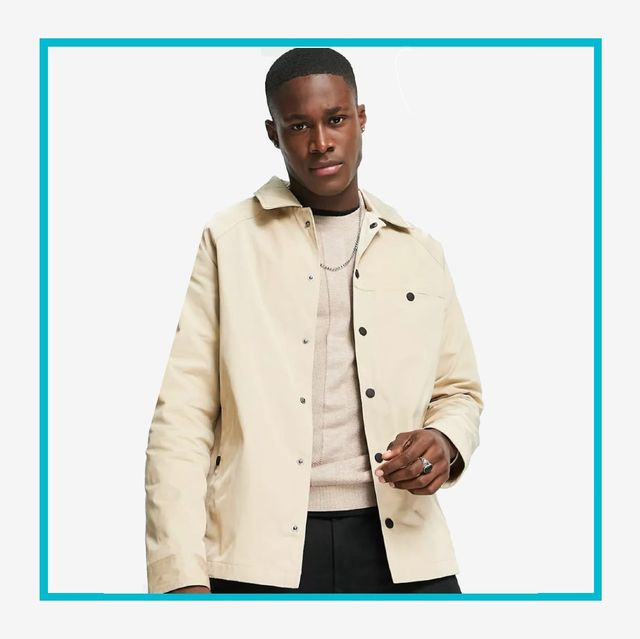Why Fashion Experts Prefer Specific Fabrics in Branded Clothing Lines
Why Fashion Experts Prefer Specific Fabrics in Branded Clothing Lines
Blog Article
Recognizing Garments: The Relevance of Material Choices in Your Wardrobe
The choice of textile in clothes plays a critical role in both aesthetics and performance. Different materials offer varying levels of breathability, longevity, and convenience, straight affecting the wearer's experience. Understanding these subtleties can improve one's wardrobe significantly. Many overlook how these selections can impact not simply individual style, but also sustainability. What material choices could redefine your wardrobe and align it with both design and duty?
The Role of Textile in vogue and Functionality

Common Material Kinds and Their Features
When selecting garments, recognizing the features of typical textile types is important for making notified options. Cotton, a widely-used all-natural fiber, is understood for its soft qualities, breathability, and versatility, making it suitable for sportswear and day-to-day garments. Bed linen, one more natural choice, flaunts excellent moisture-wicking buildings and an unique appearance, perfect for warm climates.Wool, usually preferred for its heat and durability, varies in fineness; merino wool is soft versus the skin, while coarser types are used for outerwear. Artificial fabrics like polyester and nylon supply sturdiness and resistance to wrinkles, making them popular for activewear and travel garments. Blends, which integrate all-natural and artificial fibers, can enhance performance while maintaining convenience. By identifying these textile characteristics, people can choose clothes that lines up with their way of life and aesthetic preferences.
Breathability and Convenience: Selecting the Right Fabrics for Different Environments
Picking the right materials for various climates can considerably enhance convenience and general wearability. Breathable materials are vital in warm climates, as they enable air flow and wetness dissipation. Fabrics such as cotton, bed linen, and moisture-wicking synthetics efficiently attract sweat away from the body, keeping the wearer cool and dry. Alternatively, in colder environments, thicker textiles like woollen or fleece supply insulation while maintaining breathability, making certain heat without overheating.Additionally, the selection of material weight plays an essential function; lightweight fabrics are more suitable for summertime, whereas heavier alternatives are fit for wintertime wear. Comprehending the unique buildings of each material allows people to clothe properly for differing climate problems. Ultimately, choosing breathable and comfortable materials customized to details environments can greatly enhance everyday comfort and boost the overall experience of wearing clothing.
Sturdiness and Care: How Fabric Affects Longevity of Your Closet
Selecting the ideal materials can significantly impact the sturdiness and care demands of a wardrobe. Fabrics such as cotton and polyester are recognized for their strength and simplicity of maintenance, making them excellent for day-to-day wear. On the other hand, fragile products like silk and lace require even more careful handling and specialized cleaning approaches, which can boost the moment and effort needed for care. Branded Clothing.Durability is additionally influenced by the material's weave and finish; tightly woven textiles tend to resist damage better than loosely woven options. In addition, artificial blends often offer boosted toughness, integrating the best top qualities of multiple fibers.Understanding the treatment directions for every textile is essential, as improper washing or drying out can bring about premature wear. Eventually, picking long lasting products can bring about a longer-lasting closet, minimizing the frequency of substitutes and adding to a much more lasting fashion choice
The Impact of Fabric on Fit and Shape

Sustainable Textile Selections: Making Eco-Friendly Decisions
The influence of material extends beyond fit and shape to include ecological variables, motivating a growing interest in lasting material selections. Environmentally friendly fabrics, such as natural cotton, hemp, and Tencel, are acquiring grip amongst consumers that prioritize sustainability in their wardrobes. These products are usually created with less chemicals and water, minimizing their ecological footprint.Additionally, recycled materials, made from post-consumer waste, provide an ingenious service to the textile industry's air pollution trouble. Brands significantly welcome openness in their sourcing methods, permitting customers to make enlightened decisions concerning their purchases.Choosing lasting fabrics not only sustains ethical methods yet additionally encourages the fashion business to embrace more accountable production techniques. As recognition of environmental problems climbs, people are urged to review the long-term impact of their fabric options, cultivating a motion towards a much more lasting and environmentally mindful technique to style.
Elevating Style: Just How Fabric Can Transform an Outfit
While several might focus on shade and cut when picking an outfit, the selection of material plays an essential duty in boosting design and improving overall look. Different materials share distinctive state of minds and messages; for instance, why not try here silk emanates deluxe and sophistication, while jeans uses a laid-back, relaxed ambiance. The structure and drape of a textile can considerably change the shape, with organized fabrics providing a refined appearance and softer ones developing an extra fluid, kicked back aesthetic.Moreover, the weight of the textile affects wearability throughout periods. Light-weight materials like bed linen and cotton are suitable for summer, while larger materials such as woollen and velour give warmth and elegance in chillier months. Comprehending textile residential properties, such as breathability and stretch, also encourages individuals to make educated choices that boost comfort without compromising style. Eventually, the best fabric can change an attire from normal to remarkable, making it an important consideration in any type of wardrobe.
Often Asked Questions
Exactly how Do I Recognize the Material Material of My Clothing?
To determine fabric content, one can take a look at treatment labels, conduct burn tests for fiber recognition, or consult textile swatches. These approaches help differentiate materials, ensuring notified options for apparel treatment and upkeep in everyday wear.
Can Fabric Selection Affect My State Of Mind or Self-confidence?
Textile option can greatly impact an individual's mood and self-confidence. Branded Clothing. Specific materials may stimulate feelings of convenience or elegance, while others can feel limiting or unflattering, eventually affecting self-perception and emotional health throughout the day
What Fabrics Are Ideal for Sensitive Skin?
For people with delicate skin, natural materials like cotton, linen, and bamboo are commonly recommended. These products are breathable, hypoallergenic, and less most likely to trigger irritation, making them suitable choices for comfort and skin health and wellness.
Exactly how Do I Properly Laundry and Treatment for Various Fabrics?
To correctly clean and care for different fabrics, one must think about each product's details requirements, including temperature setups, cleaning agents, and drying out techniques, ensuring long life and preserving the textile's original top qualities for suitable use.
Are There Details Fabrics for Athletic or Performance Put On?
Athletic or performance wear often makes use of fabrics such as nylon, polyester, and spandex. These products are developed for moisture-wicking, breathability, and adaptability, boosting movement and convenience throughout physical tasks while supplying durability and assistance. On the other hand, in chillier climates, thicker materials like woollen or fleece supply insulation while maintaining breathability, making sure heat why not try this out without overheating.Additionally, the selection of material weight plays a vital duty; light-weight fabrics are better for summer season, whereas larger options are suited for winter season wear. In contrast, delicate products like silk and shoelace require even more cautious handling and specialized cleansing methods, which can enhance the time and initiative needed for care.Durability is likewise affected by the textile's weave and check this site out finish; securely woven materials have a tendency to stand up to wear and tear much better than freely woven choices. In comparison, rigid fabrics can limit motion however supply a traditional, polished look.Moreover, the thickness and appearance of the textile can affect the aesthetic perception of body shape. The impact of textile prolongs past fit and shape to encompass environmental aspects, triggering an expanding rate of interest in lasting fabric options. The texture and drape of a textile can drastically modify the shape, with organized textiles supplying a polished appearance and softer ones creating a much more fluid, loosened up aesthetic.Moreover, the weight of the fabric influences wearability across seasons.
Report this page